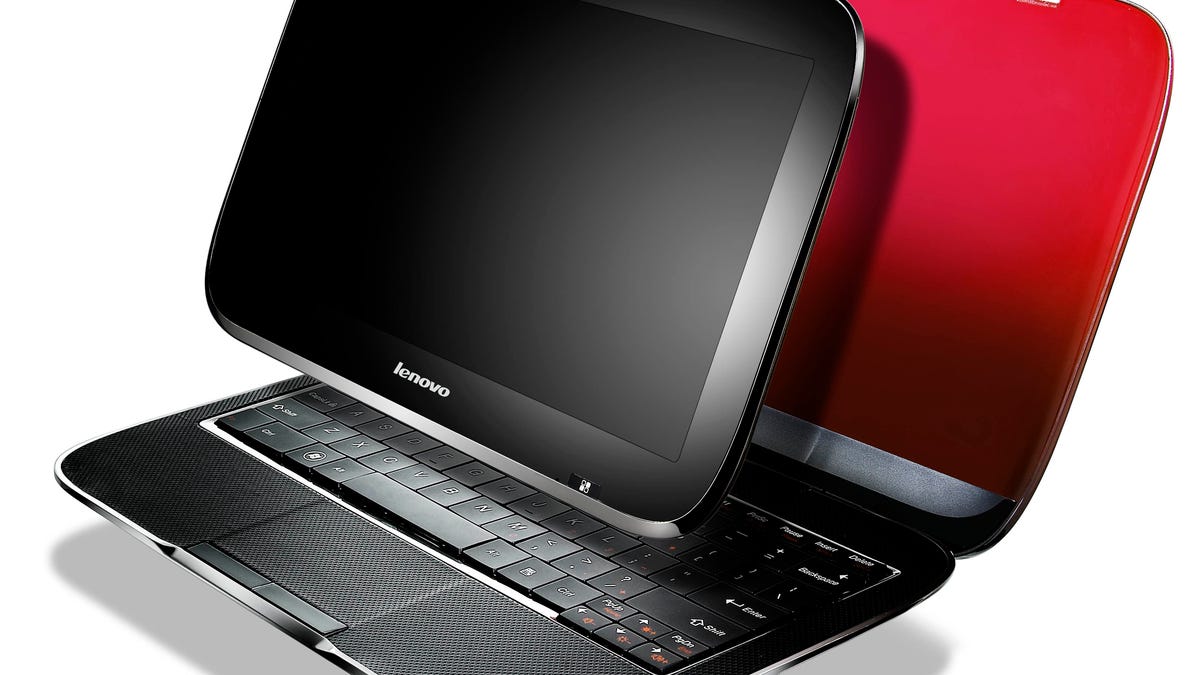Lenovo meshes tablet and Netbook in one device with IdeaPad U1 Hybrid Notebook
Why not take two hot gadget concepts and try blending them into one device? Lenovo's U1 Hybrid Notebook gives it a shot in a bold new conceptual design.

UPDATE: Hands-on impressions added below. The IdeaPad U1 Hybrid is our Best of CES 2010 Award Winner in the category of Computers and Hardware. Also be sure to check out our hands-on impressions of Lenovo's other Netbooks and smartbooks from CES.
Tablets are rapidly becoming the hot chatter-buzzword of 2010. Netbooks were very 2009. Combine them both and perhaps you end up with a great idea--at least, so hopes Lenovo. In one of the boldest moves in laptop technology at CES, the IdeaPad U1 Hybrid doesn't just flip its screen to become a tablet--the screen detaches completely as its own separately powered computing device.
Perhaps it sounds too good to be true, and we're both skeptical and very curious here at CNET. At an estimated cost of $999, the U1 will have in its main body an Intel Core 2 Duo ULV processor, and its 11.6-inch multitouch screen will house a separate ARM processor and battery. Both devices will produce completely different experiences, however, according to Lenovo's press release. Availability hasn't been revealed yet, but Lenovo should release those details soon.
In its notebook form, the hybrid will run Windows 7 Home Premium and have an estimated battery life of 10 hours. Meanwhile, the "Slate mode" will run its own Lenovo Skylight OS with a multi-panel UI, using a Qualcomm Snapdragon CPU--and it has an estimated 8-hour battery life. Stereo speakers, a mic, and a 1.3 megapixel webcam are integrated on the Slate screen.
As for memory, the main body will house an SSD up to 128GB, while the Slate tablet will have 16GB of flash memory. Other specs of note: 802.11b/g Wi-Fi, 3G wireless, and a system weight of 3.7 pounds in notebook form or 1.6 pounds as a tablet/slate.
Hands-on impressions:
To start with, the Lenovo IdeaPad U1 Hybrid is a fascinating idea. The sleek round notebook has a form almost like the old clamshell iBooks from years ago, or a Motorola PEBL as a laptop. Textured surfaces on the inside and a shiny, translucent ruby lid give the machine an instantly eye-catching appeal. The showcase feature of the U1--the undocking of its 11.6-inch screen to become its own handheld Qualcomm Snapdragon-powered tablet--is accomplished via a pin dock at the base of the screen that activates Wndows 7 when attached, or turns on Lenovo's Skylight Linux-based OS when detached. Lenovo representatives handled the undocking for us, and it makes us curious as to how delicate the procedure is and whether the laptop might accidentally disconnect under casual use, but the tablet screen feels solid and attractive on its own.
Meshing a tablet and notebook into one device is conceptually smart, but fraught with questions. Will both devices sync well with each other? Will the battery life be suitable? None of these could be determined in the space of a few minutes, but the tablet's Snapdragon-powered OS had a series of scrolling app-based windows that launched widgets, some of which looked more ready for prime time than others. Windows could be expanded and photos zoomed in on with iPhone-esque multitouch, but the performance was generally choppier and laggier than on an iPhone. Video playback was a mixed bag depending on the size of the video window, but we imagine its performance will be tweaked before release. The tablet's edge-to-edge glass is comfortable and the chromed edges appealing, but the weight and slight heat dissipation on the sides made us wonder about long-term ergonomics.
Intriguingly, Lenovo told us that the base, when detached, can continue to function as its own Core 2 computer independent of the tablet--a monitor would need to be attached, but it opens up possibilities for the U1 to truly act as two devices in one. Separate batteries and Wi-Fi antennas are contained in both the base and the tablet screen, while the tablet has the 3G and Bluetooth antennas, as well as speakers and a webcam. The tablet doesn't have a sensor for switching between landscape and portrait, but apps will allow easy flipping for e-reading, browsing and other functions. The keyboard is flat and somewhat squishy, a far cry from Lenovo's generally excellent raised and tapered keys, but Lenovo said they'll be updating to a raised keyboard before release.

